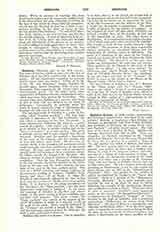

Sedulius Scotus, an Irish teacher, grammarian, and Scriptural commentator, who lived in the ninth century. Sedulius is sometimes called Sedulius the Younger, to distinguish him from Coelius Sedulius, also, probably, an Irishman, the author of the “Carmen Paschale”, and other sacred poems. The Irish form of the name is Siadhal, or Shiel. Sedulius the Younger flourished from 840 to 860. There are, altogether, six Siadhals mentioned in the “Annals of the Four Masters” between the years 785 and 855. Of these, one was present at a council at Rome in 721, and another was Abbot of Kildare, and died in 828. The best known, however, and the most important, was neither of these, but a Siadhal who, during the reign of the Emperor Lothair (840-855), was one of a colony of Irish teachers at Liege. It appears from the manuscript records of the ninth century that there was a teacher at St. Lambert, Liege, who was known as Sedulius Scotus, and was a scribe and a poet. He was a student of Greek, and, according to Montfaueon, it was he who copied the Greek Psalter now no. 8047 in the “Bibliotheque de l’Arsenale”, Paris. His poems, to the number of ninety, are published by Traube in the “Poetae Aevi Carolini”, which is a portion of the “Monumenta Germania Historica”. It is quite probable that, towards the end of his days, he went to Milan, following the example of his countryman, Dungal, who established a school at Pavia. When and where he died is unknown. Sedulius‘s most important works are his treatise “De Rectoribus Christianis”, a commentary on Porphyry’s “Isagoge”, or introduction to the logic of Aristotle, and a scriptural commentary “Collectanea in omnes beati Pauli Epistolas”. The first of these is a noteworthy contribution to Christian ethics. It is the first, apparently, of a long line of treatises written during the Middle Ages for the instruction of Christian princes and rulers, a dissertation on the duties peculiar to that state of life, a “Mirror for Princes”, as such works came to be called at a much later period. Sedulius‘s work shows, among other remarkable traits, a deep moral feeling, a realization of the fact that the mission of the State is neither purely economic on the one hand nor exclusively ecclesiastical, on the other. The question of the relations between Church and State had, indeed, been raised, and Sedulius, it need hardly be said, does not hesitate to affirm the rights of the Church and defend them. He is not on the side of those who, seeing in Charlemagne the ideal of a pontiff and ruler in one person, were in favor of the idea that the prince should in fact be supreme in matters religious. On the contrary, he is in favor of a division of temporal and spiritual. powers and requires of the prince a careful observance of the church’s rights and privileges. The description of the qualifications of the queen (pp. 34 sq. in Hellmann’s ed.) is not only Christian in feeling and tone, but also humanistic, in the best sense of the word. The commentary on the “Isagoge” is remarkable because it seems to exhibit a knowledge of the Greek text of that work, although in the ninth century and for at least three centuries after the ninth, the “Isagoge” was known in Western Europe in the Latin version only. Not the least interesting of the writings of Sedulius are his letters, some of which are published in the “Neues Archiv”, II, 188, and IV, 315. In them are narrated the vicissitudes of the Irish exiles on the Continent, and an insight is given into the attitude observed towards those exiles by the authorities, civil and ecclesiastical, as well as by the people.
WILLIAM TURNER

